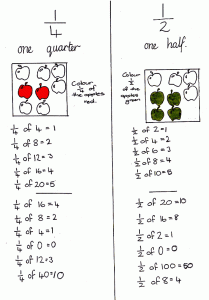 Over the past 20 years there has been a strong move towards inclusion in schools. Many children with a variety of learning issues have now joined mainstream education and there clearly is a need to change the way we approach teaching and learning as a whole. The one size fits all approach is no longer relevant although national testing commitments don’t seem to be keeping up with the changes, insisting we all sit the same tests, on the same days and at similar times across the nation. The combination of mixed ability classes and pressure to achieve standards regardless of student ability have placed a huge demand on teachers to deliver.
Over the past 20 years there has been a strong move towards inclusion in schools. Many children with a variety of learning issues have now joined mainstream education and there clearly is a need to change the way we approach teaching and learning as a whole. The one size fits all approach is no longer relevant although national testing commitments don’t seem to be keeping up with the changes, insisting we all sit the same tests, on the same days and at similar times across the nation. The combination of mixed ability classes and pressure to achieve standards regardless of student ability have placed a huge demand on teachers to deliver.
In many schools, staff is working hard to ensure the needs of students are being met. Others are sourcing relevant professional learning in order to skill up their teachers in the area of differentiated curriculum, raising the bar, learning, positive education and the like. While this is an important issue that needs attention, I’m not advocating that we teach to tests as many of my colleagues would attest. I am saying that many more teachers need to get to know their students better. I don’t just mean their names, but know who they are, how they learn, what their interests are and then manipulate and restructure curriculum to suit their students’ needs. It’s not the ‘what’ that’s important but the ‘how’ and in many cases, especially with boys, the ‘why’.
The streaming and grading of students into ability groups is slowly giving way to classes of mixed abilities. It is recognised that streaming based solely on ability only benefits the students in high-level ability classes and even then they did not achieve as high as was expected. Students in the low ability strands actually recorded poorer achievement standards. Streaming only causes division and unfair labelling of students. The lower streams are denied role models and goals as they become the ‘dummies’. The middle level is robbed of competition because all the high ability students are in some other class. I remember being in the middle Maths band in high school and while I may have been one of the top performing students in that band I still had no idea just how much better I could have been if there were higher ability students in my class. A healthy dose of competition is always good as long as it is supported by effective teaching and learning practices.
We must make efforts to teach our students how to learn. We need to give them the tools to learn just as we have our own teaching tools. Once students are armed with these strategies and learn to apply them, I’m going to go out on a limb and suggest that they will be more engaged, that their learning will improve and that standards will rise accordingly. If we expect them to achieve then they will.
One last point…If you take the time to look at PISA results, Finland, a top performing school has no streaming, doesn’t run any national tests or exams but focuses instruction on its students and their needs. Maybe we could take a leaf out of that book and see how it measures up up your school context. This, in addition to a differentiated curriculum, might help us strive towards effective teaching and learning in Australian schools. Regardless of student ability, let’s instead focus on where the students are at and teach them accordingly so that they may experience success and be recognised for the value added qualities they achieve in their own learning. If we are achieving added value then what does it matter where they are placed on national standards leagues table?
Thanks for reading 🙂
Relevant links
ACER: What outcomes do we want?

